This final instalment will address days 5 and 6 of our trip. The fifth day of the trip turned out to be a very busy one. The plan was to visit some of the iconic villages of the PNPG, such as Soajo, Lindoso, and Castro Laboreiro. With a stop in between at the famous Senhora da Peneda sanctuary. I woke up before sunrise for a walk in Sobredo; I really enjoy grabbing the camera and simply go out into the fresh air and early morning light. Life in the rural countryside starts well before dawn, with the cattle being led to pastures, and the farmers tending to their crops. I walked up to the main road to enjoy the views over the surrounding landscape, with fog in the valleys and the first light illuminating the flanks of the mountains.
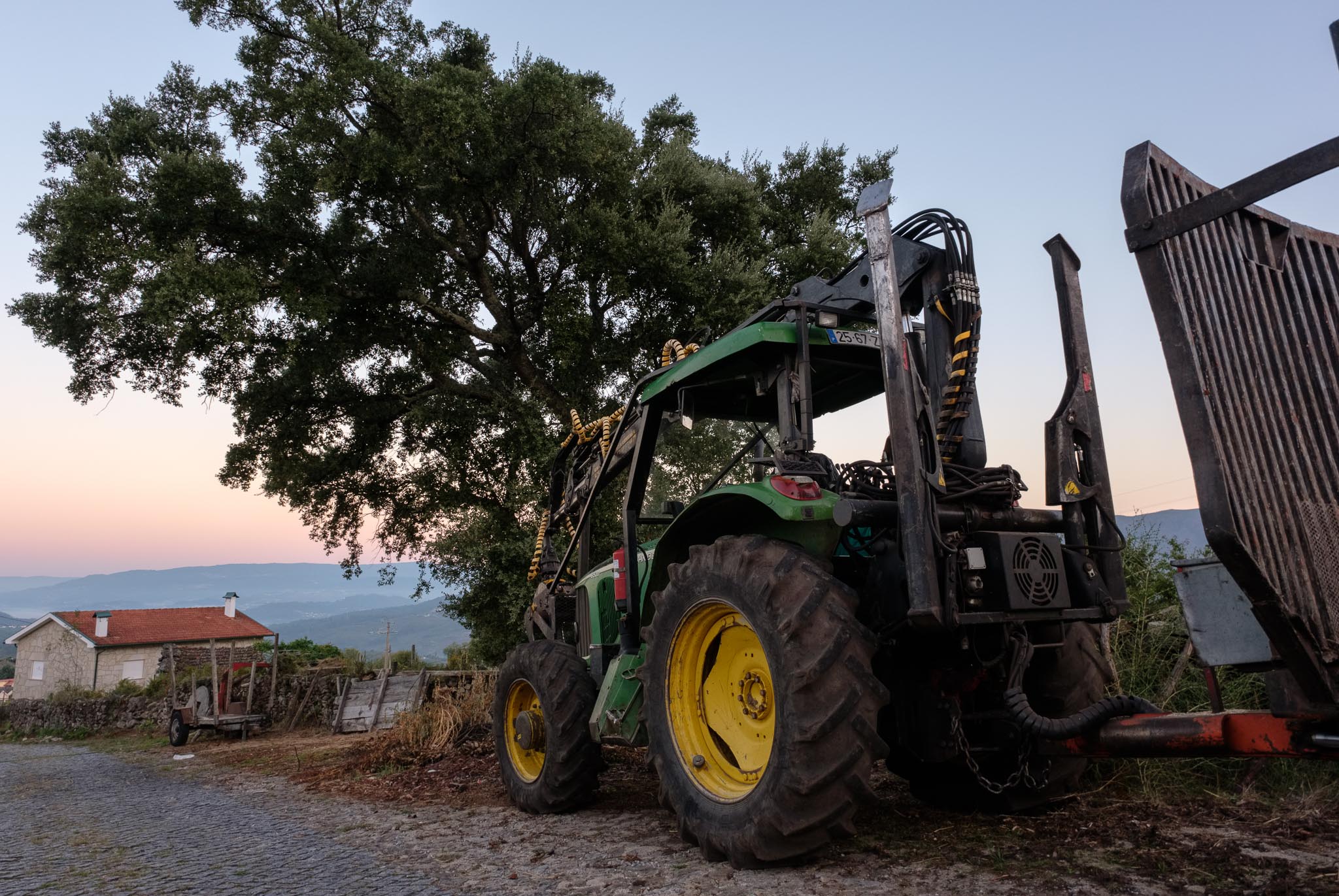
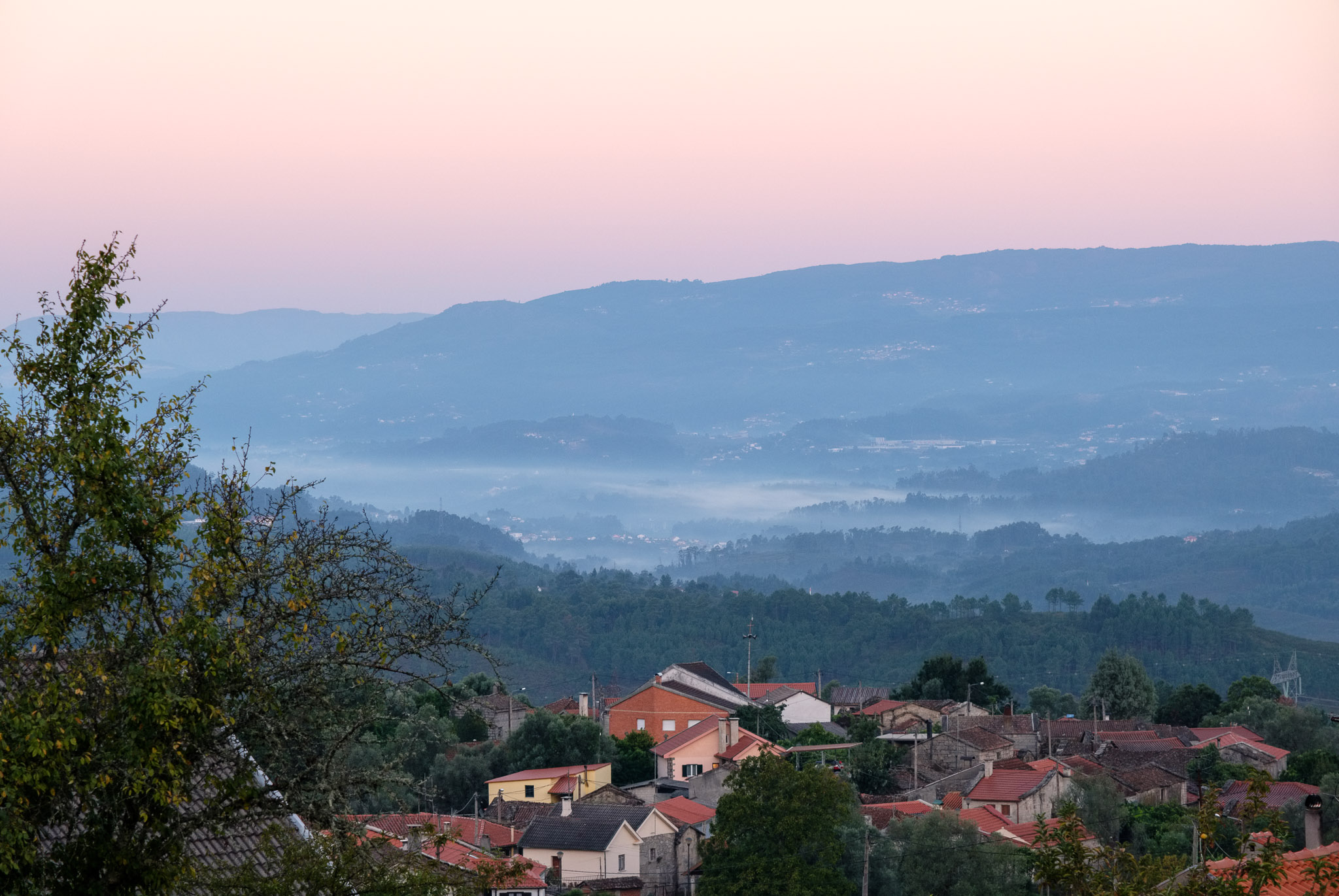

After breakfast, it was time to leave and head to Soajo, a small town rich in heritage and culture. Soajo is known for its “espigueiros”, small granite “houses” on top of stacks, where traditionally the corn cobbs were stored, away from the reach of animals. The group of espigueiros lies at the top of a granite slab at the entrance of the village. But Soajo has more interesting things to see, so do walk around for a while in the maze of narrow streets.
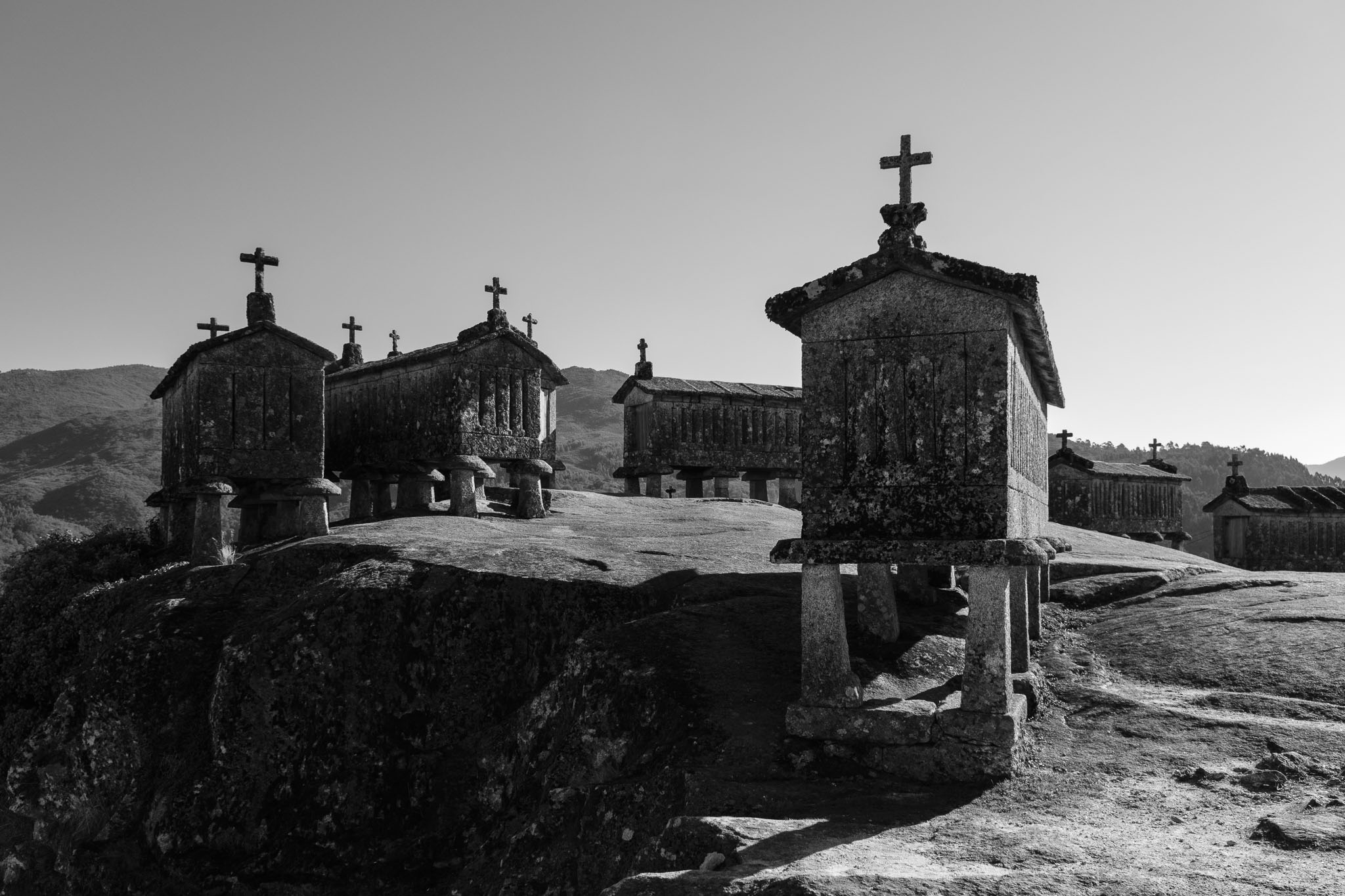
From here it is a short drive to another very interesting town, Lindoso, close to the border. Here, do not miss the castle and the group of espigueiros next to it. There is a rich history of disputes along the border, and for sure this castle played an important role, with its prominent location at the top of the hill.

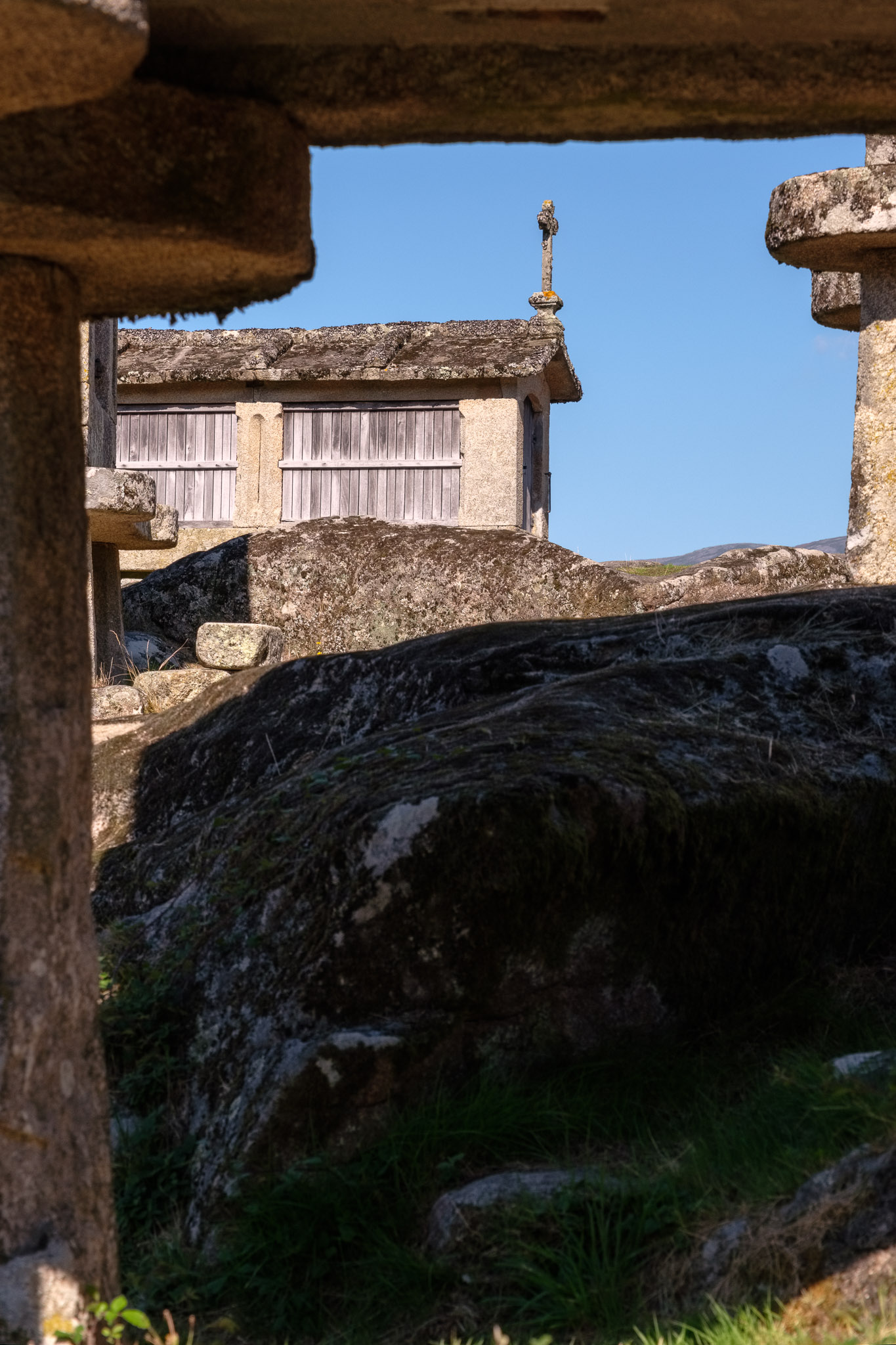
Leaving Lindoso, we drove to Castro Laboreiro, located to the north. The shortest road took us through Spain, and close to the ghost village of Aceredo. Due to the scarcity of rain, the water level in Lindoso dam is so low that this town, once under water, is now emerged.
Castro Laboreiro is another place that has its roots in prehistoric times. Located in a high altitude plateau in the serra da Peneda, above 1,100m, the village is well known for its castle (dated from the XII century) at the top of a granite mountain, several waterfalls, and the Castro Laboreiro autochthonous dog race. This is an old race of dogs from this region, specifically bred for the task of herding cattle in the mountains. There are many interesting places to visit, but do not miss the short trail to the castle; at a first glance, the castle is hard to notice, because it can be easily mistaken for another group of granite formations. From its top, the surrounding view is amazing, and the only companions are the wind and the song of the birds.

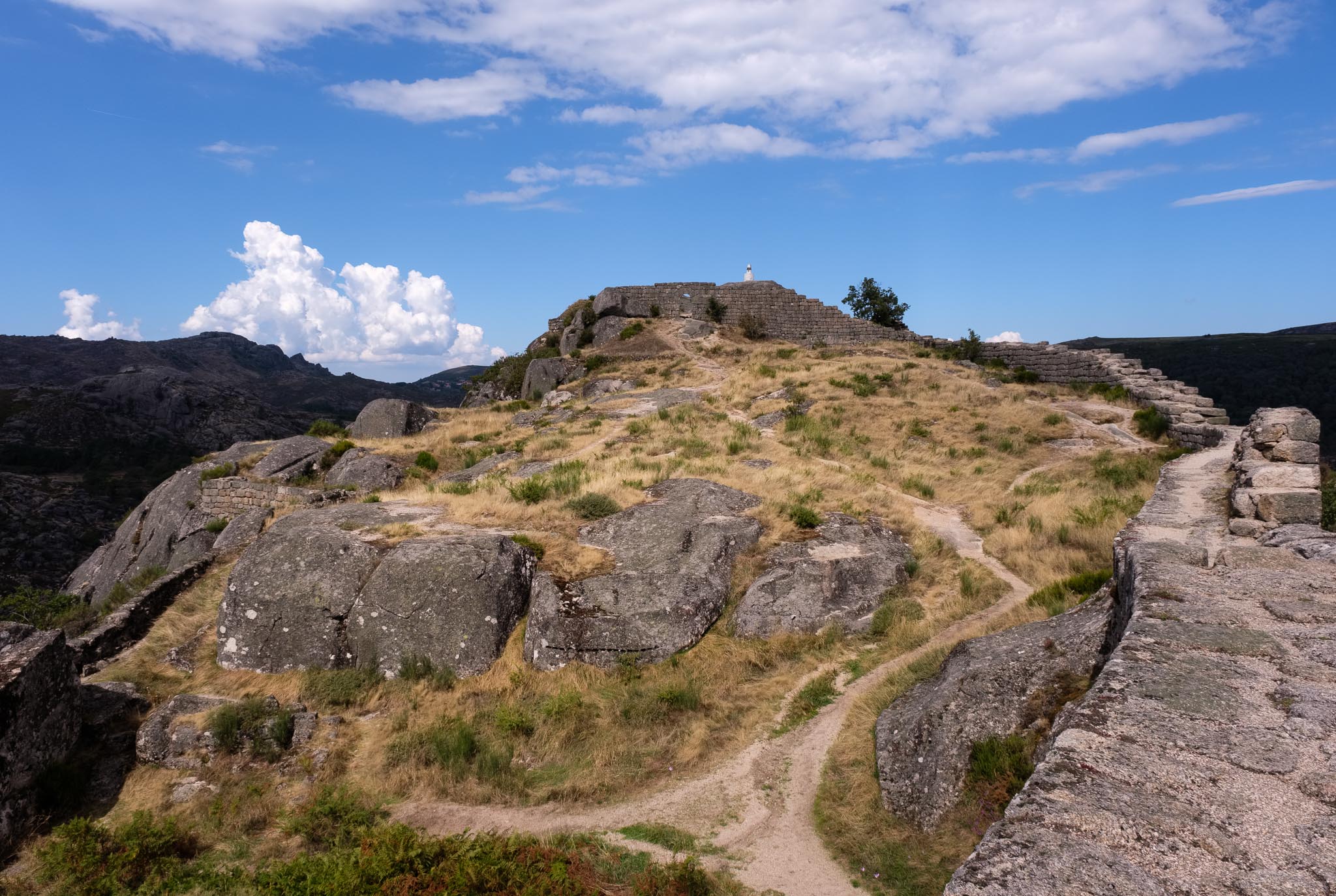
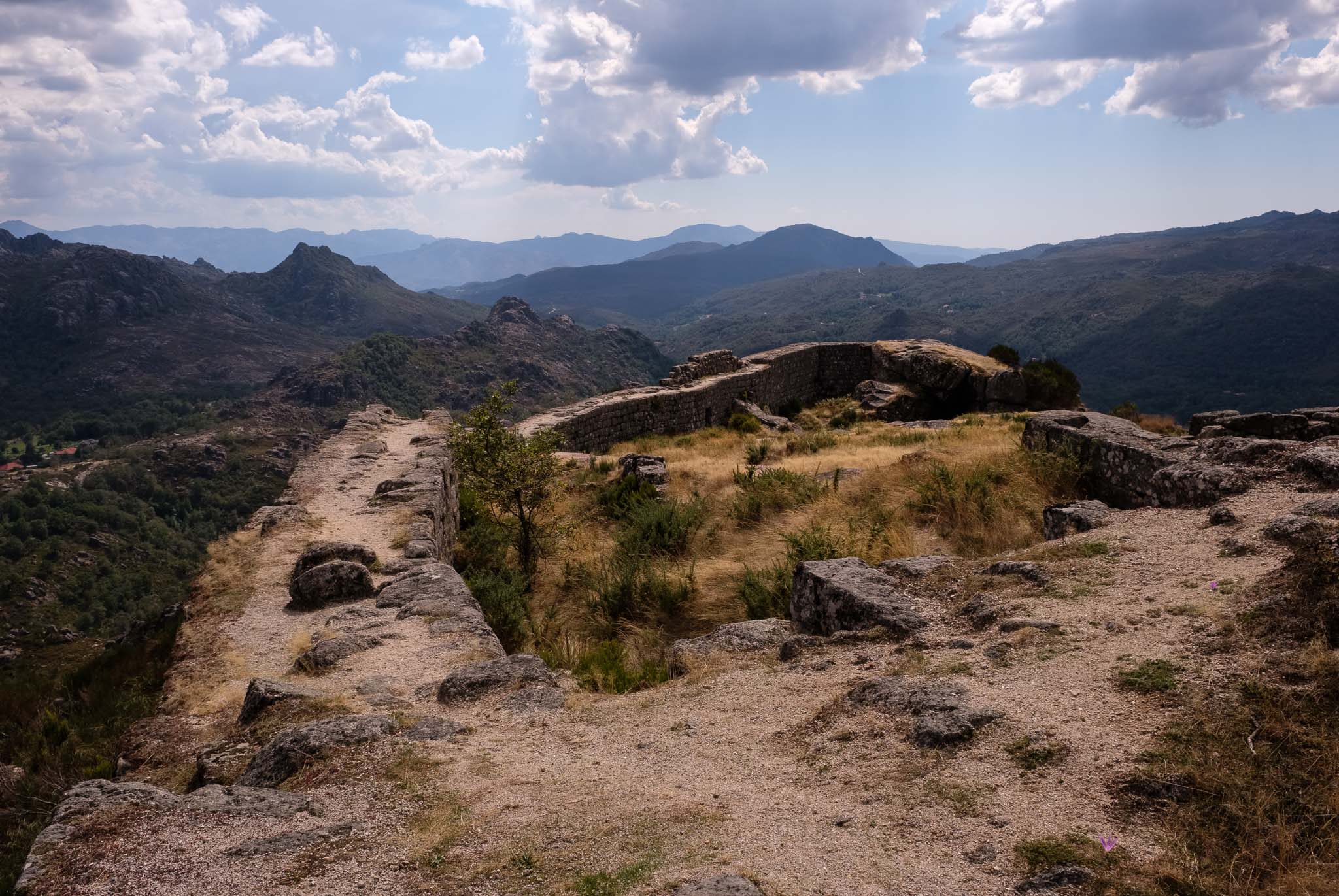
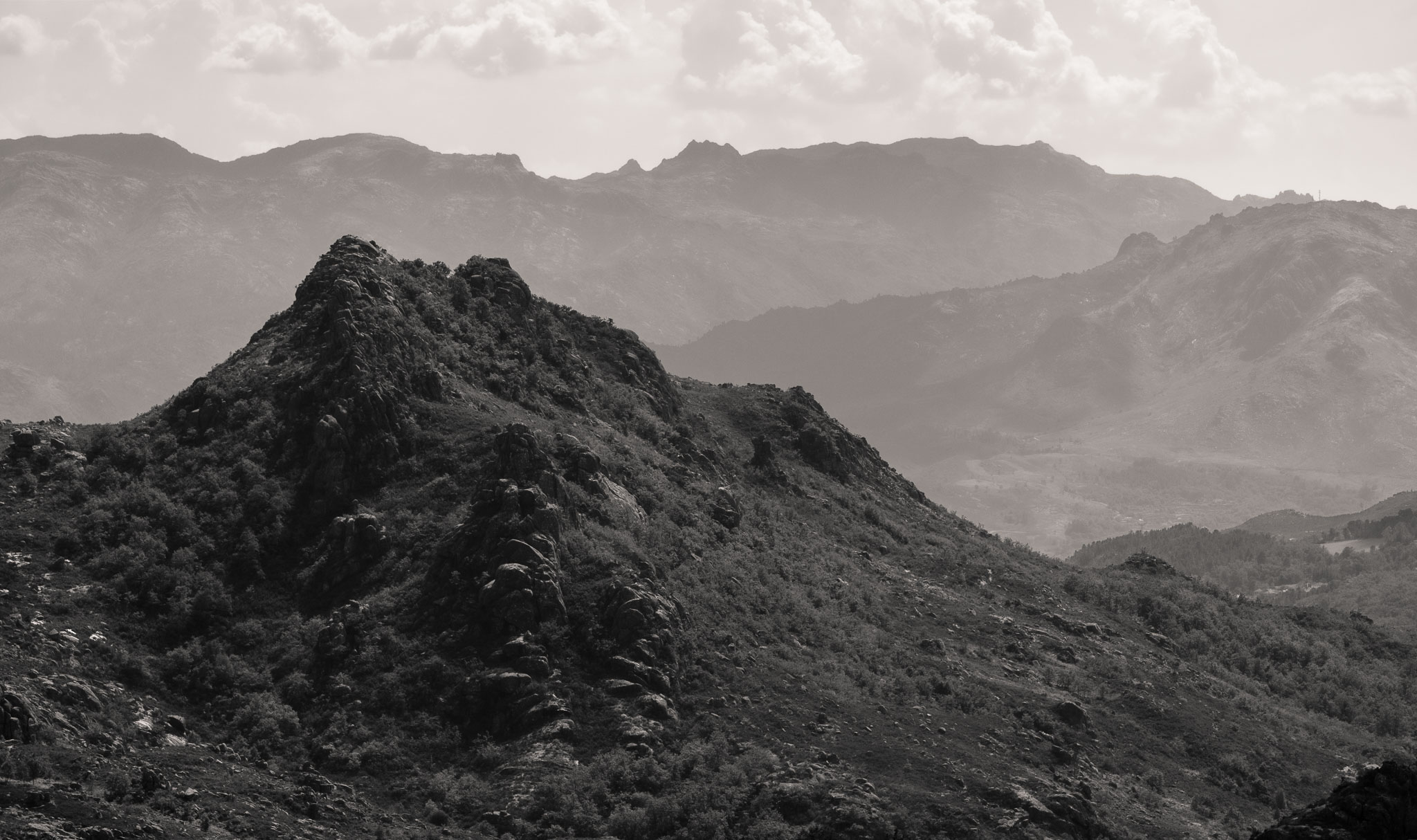
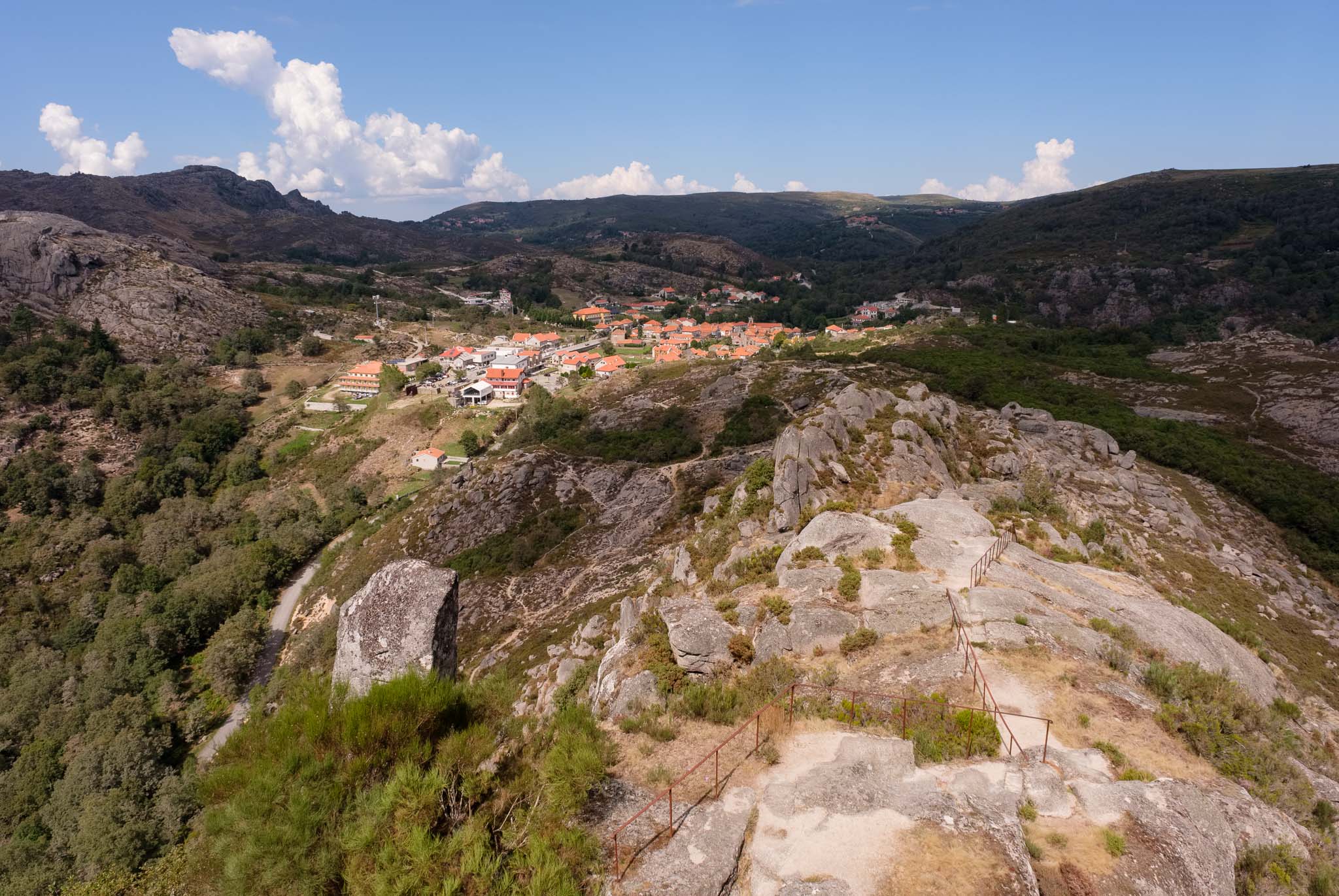
There are several nice places for a picnic lunch and a rest, after which we head to the sanctuary of Senhora da Peneda, hidden amongst the flanks of the mountain. As always, the distance is not great, but the road is quite twisty. I remember visiting 30 years ago, when several of these roads were not yet black top. The sanctuary is located below a large granite block and a waterfall.

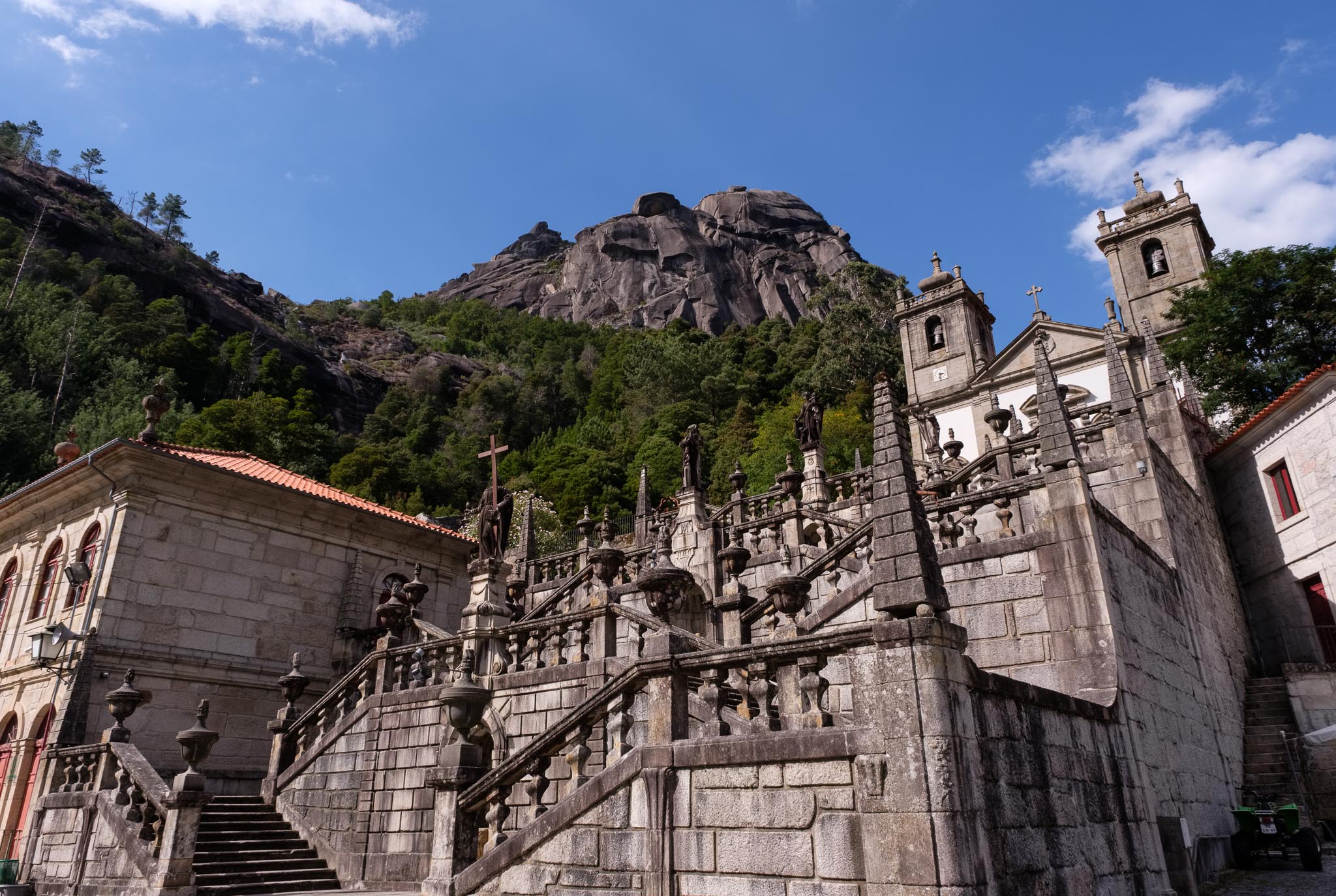
The day was already long, and we still had to go to Sistelo to spend the next couple of nights. Visiting these iconic places was a wonderful experience. The day ended in Sistelo, a village that became quite popular in the last few years, after winning a national contest of rural villages. Located in the lush green valley of the river Vez, Sistelo can be a center point for some great trekking, which we would try the following day.


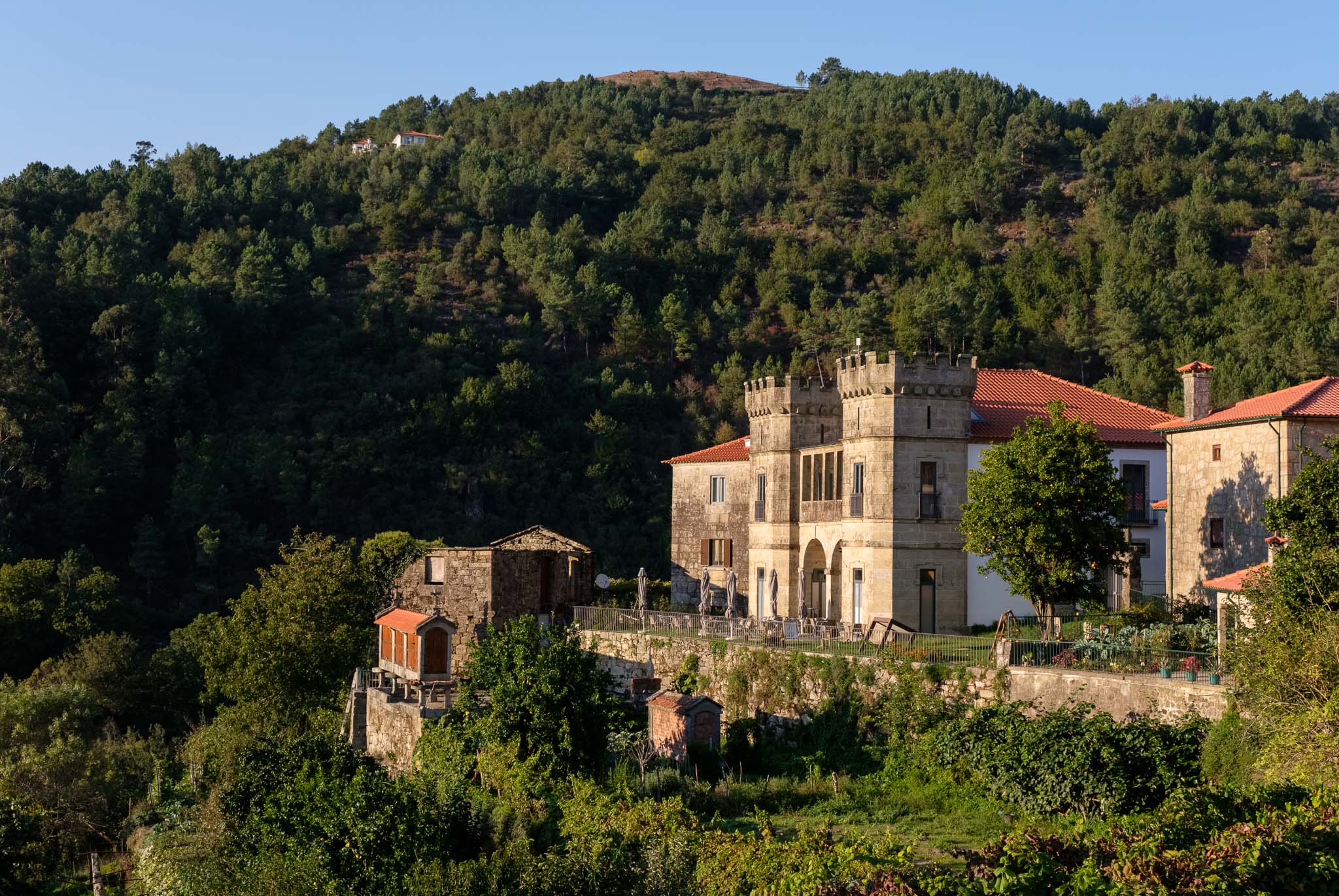
We wanted to walk along one of the trail paths that connected the village to the high altitude “brandas”, or settlements where people take the cattle during the summer, to avoid the higher temperatures down in the valleys. Sistelo is also well known for the terraces built into the flanks of the mountains, where corn is planted. The trail starts in the main square, and initially follows the river Vez in a shaded forest. After a while, it starts to rise in altitude, with great views over the surrounding landscape.
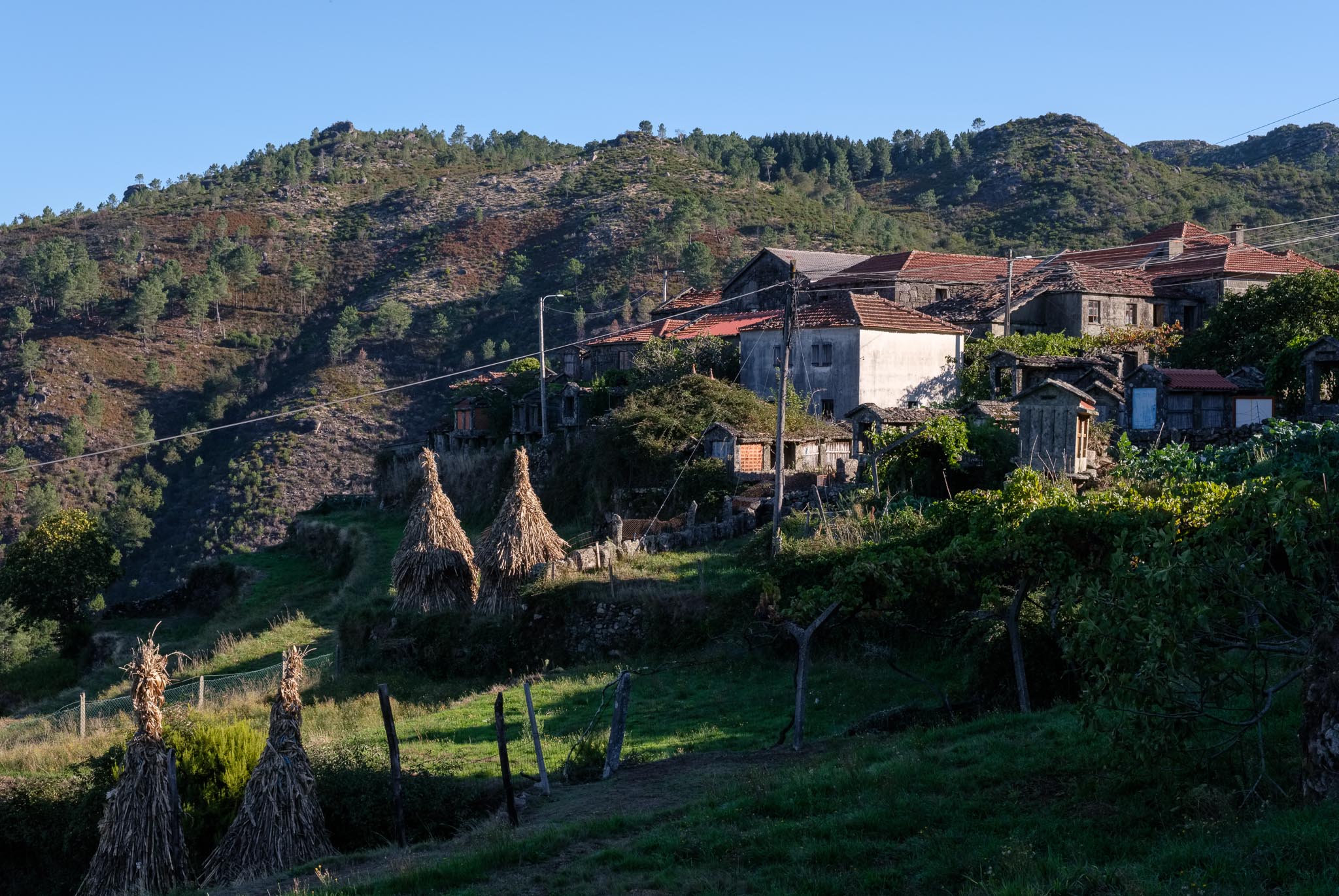
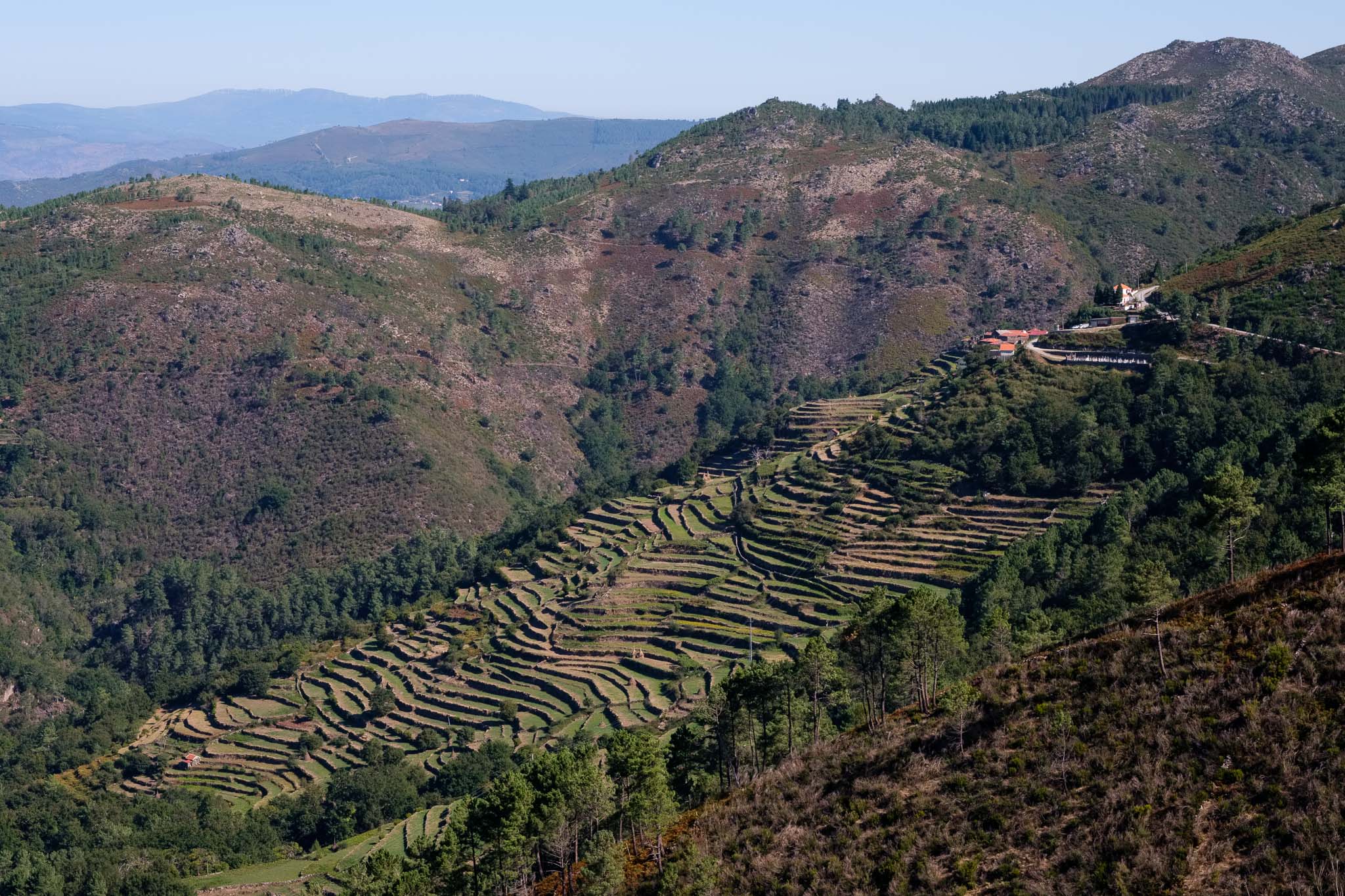
Once at the top, the path crosses the Branda do Alhal, where some of the houses are still in use today. The day is hot, so we benefit ourselves from the lower temperatures up here.
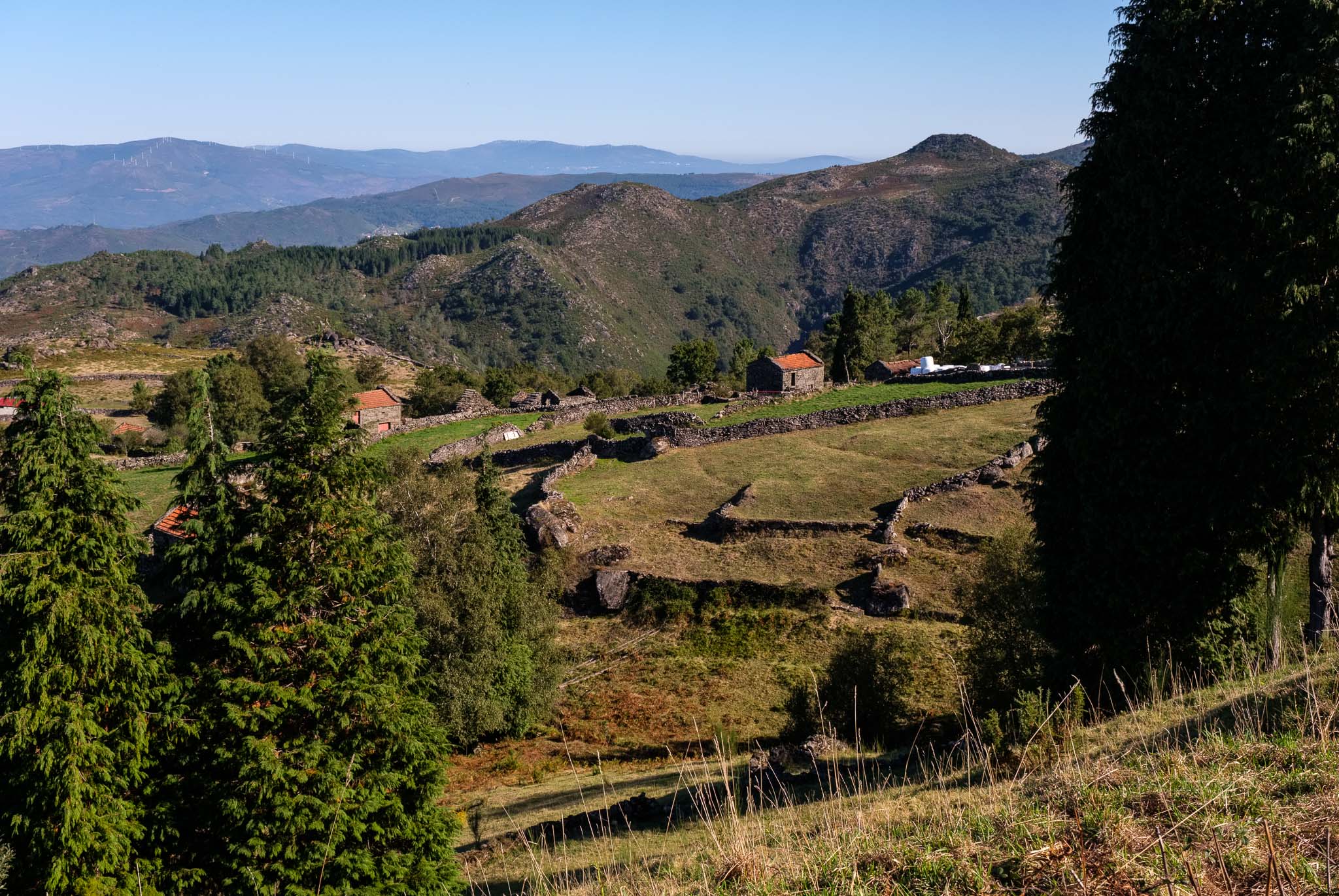
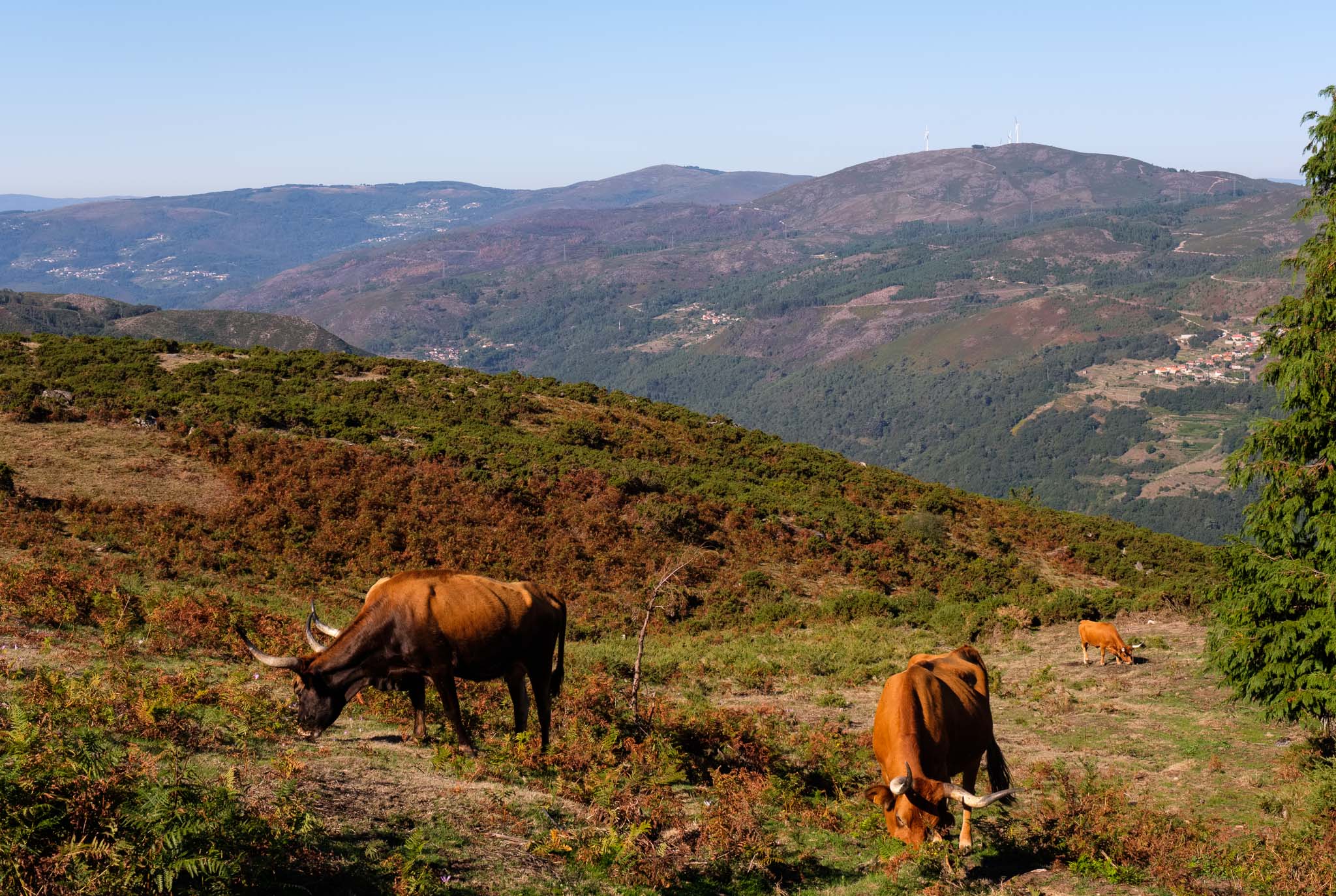
A few kilometres more and we enter a completely different world, a forest so dense that the light barely reaches the ground. It feels like a magical place, straight out of a brother’s Grimm story. Even a white dog appears to enhance the feeling. There is a sense of mystery while crossing this wonderland.
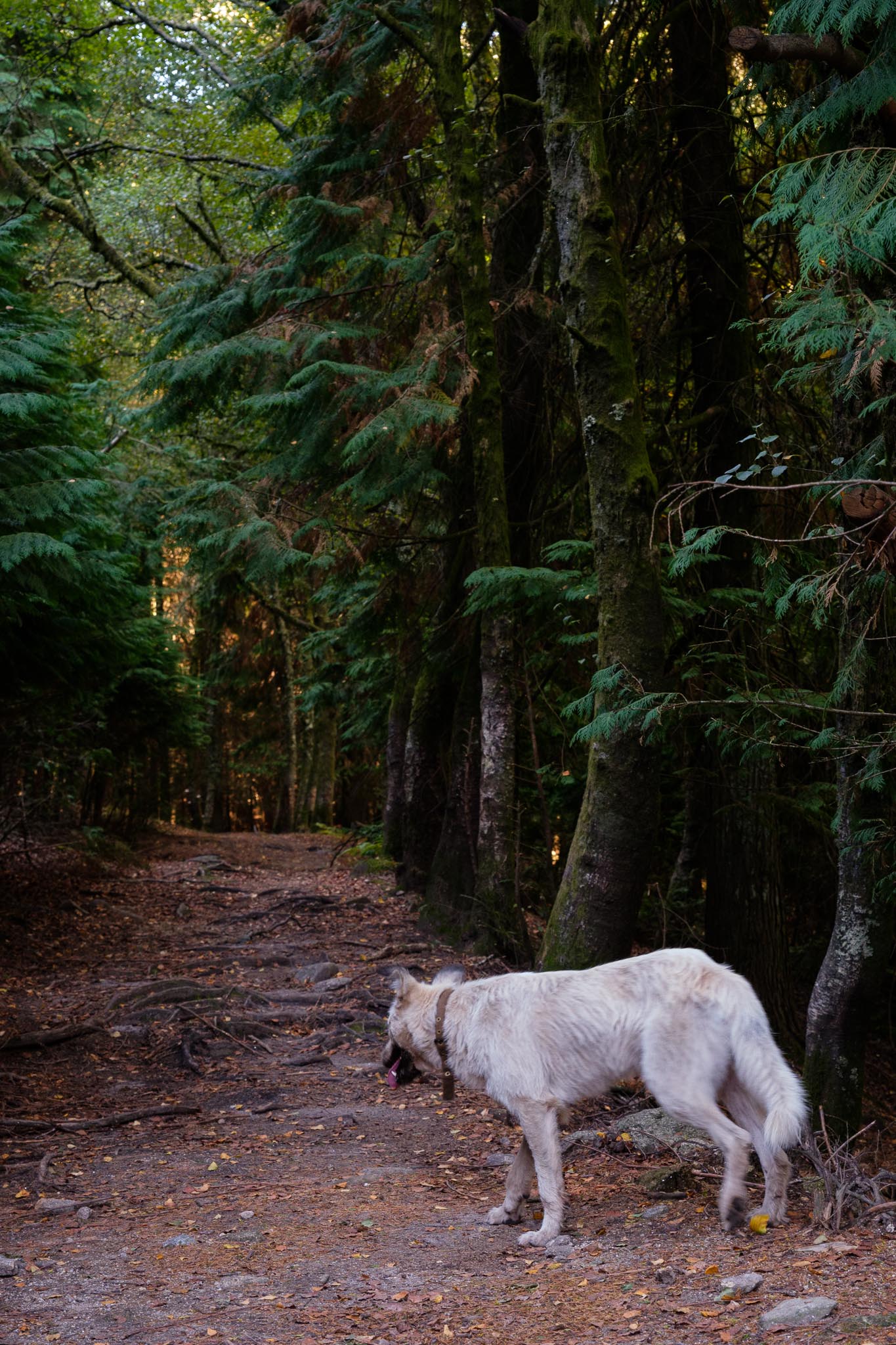
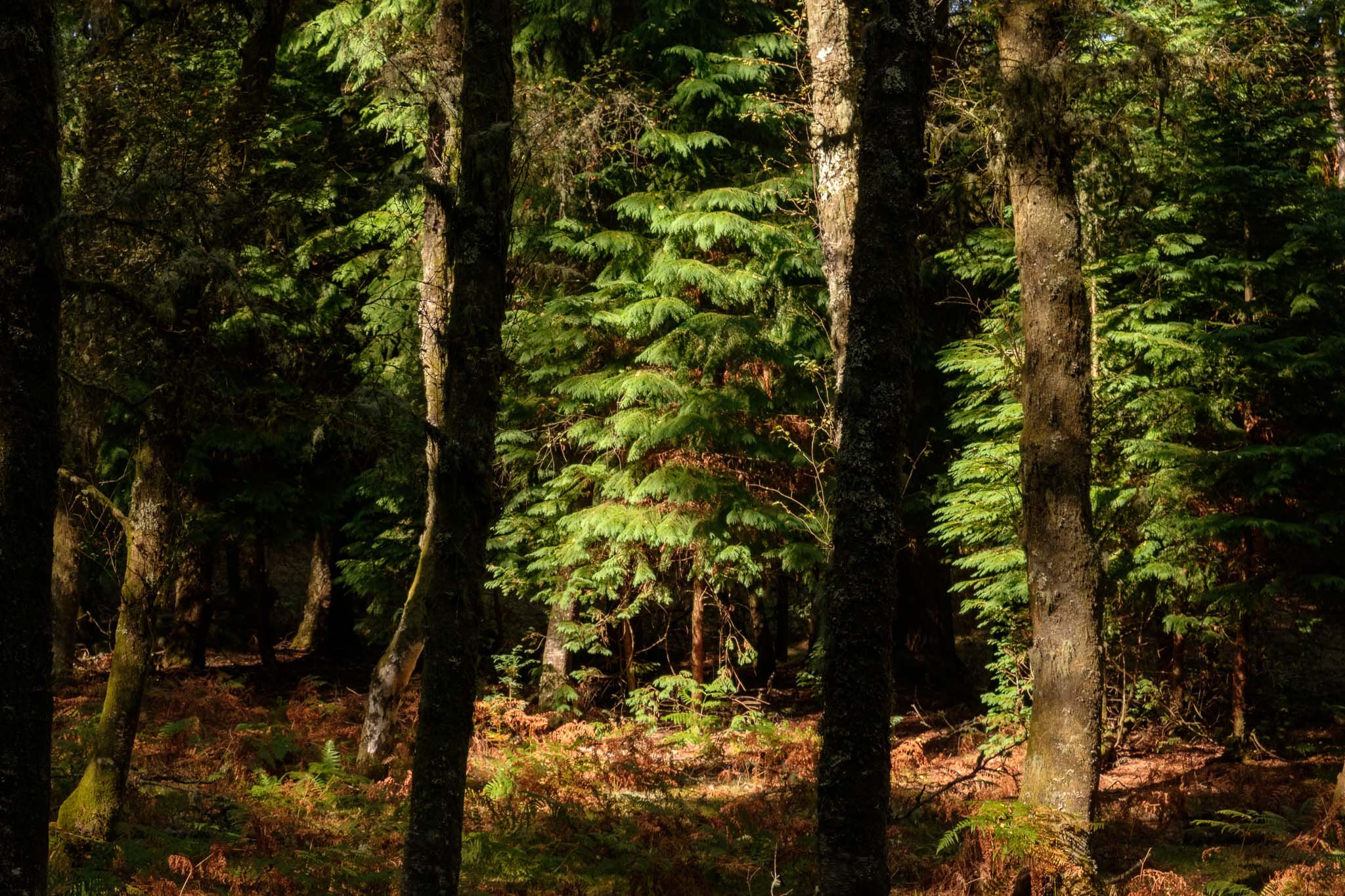
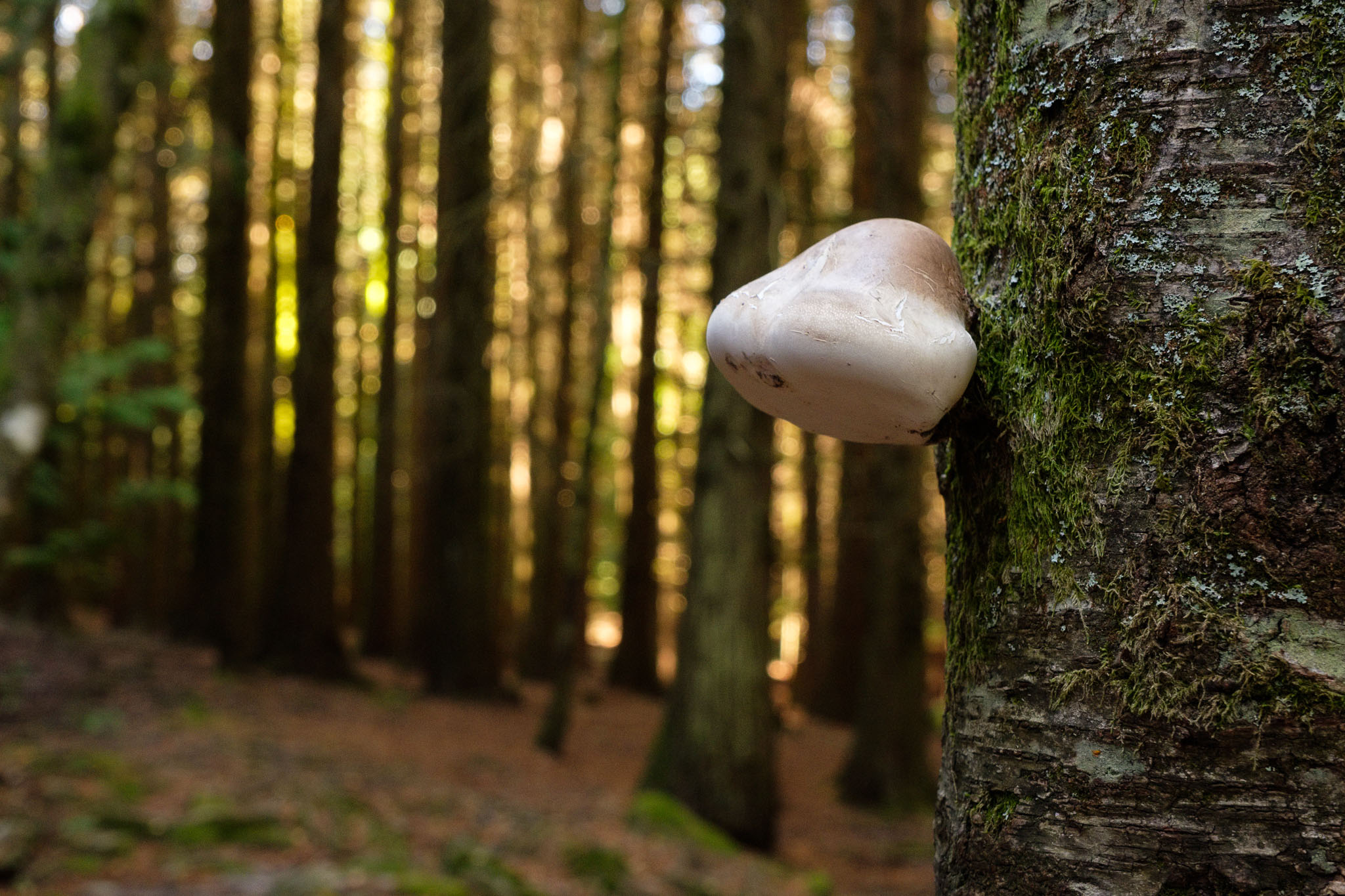
After leaving the forest behind, the trail descends the mountain towards Sistelo. Once we are back in the village, we rest during lunchtime, saving energy for the afternoon, where the plan was to visit another iconic area of the PNPG, namely the heart of the serra da Peneda and a few of its waterfalls and lakes.
One of the best things in Gerês is the opportunity to see the “garranos”, or local horses that are still raised in complete freedom. As we were driving in the Gavieira plateau towards the viewpoint of Tibo, we saw a herd of them near the road. I stopped the car and made a few photos. They were grazing side by side with cattle, with some running in the fields.
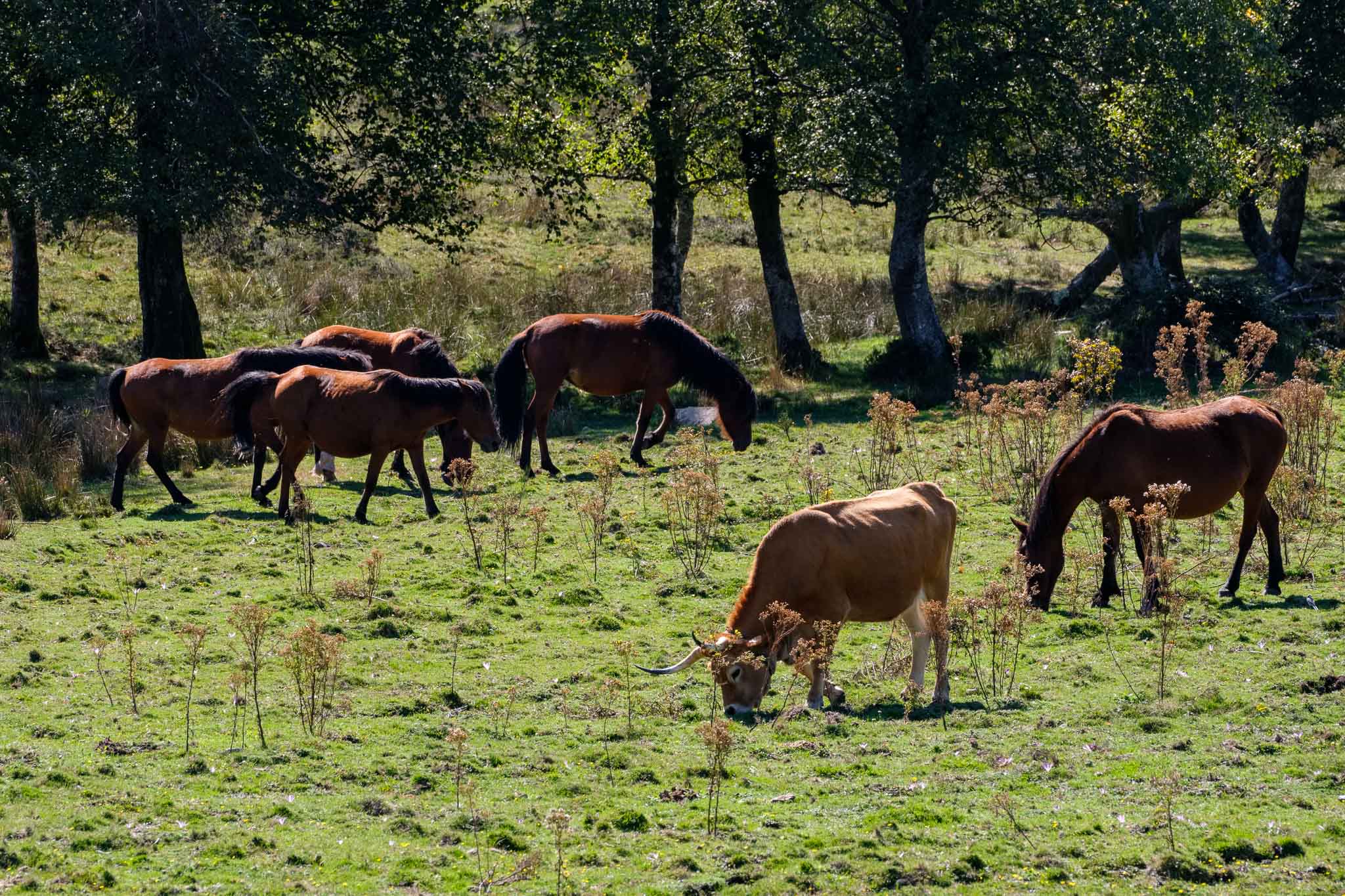
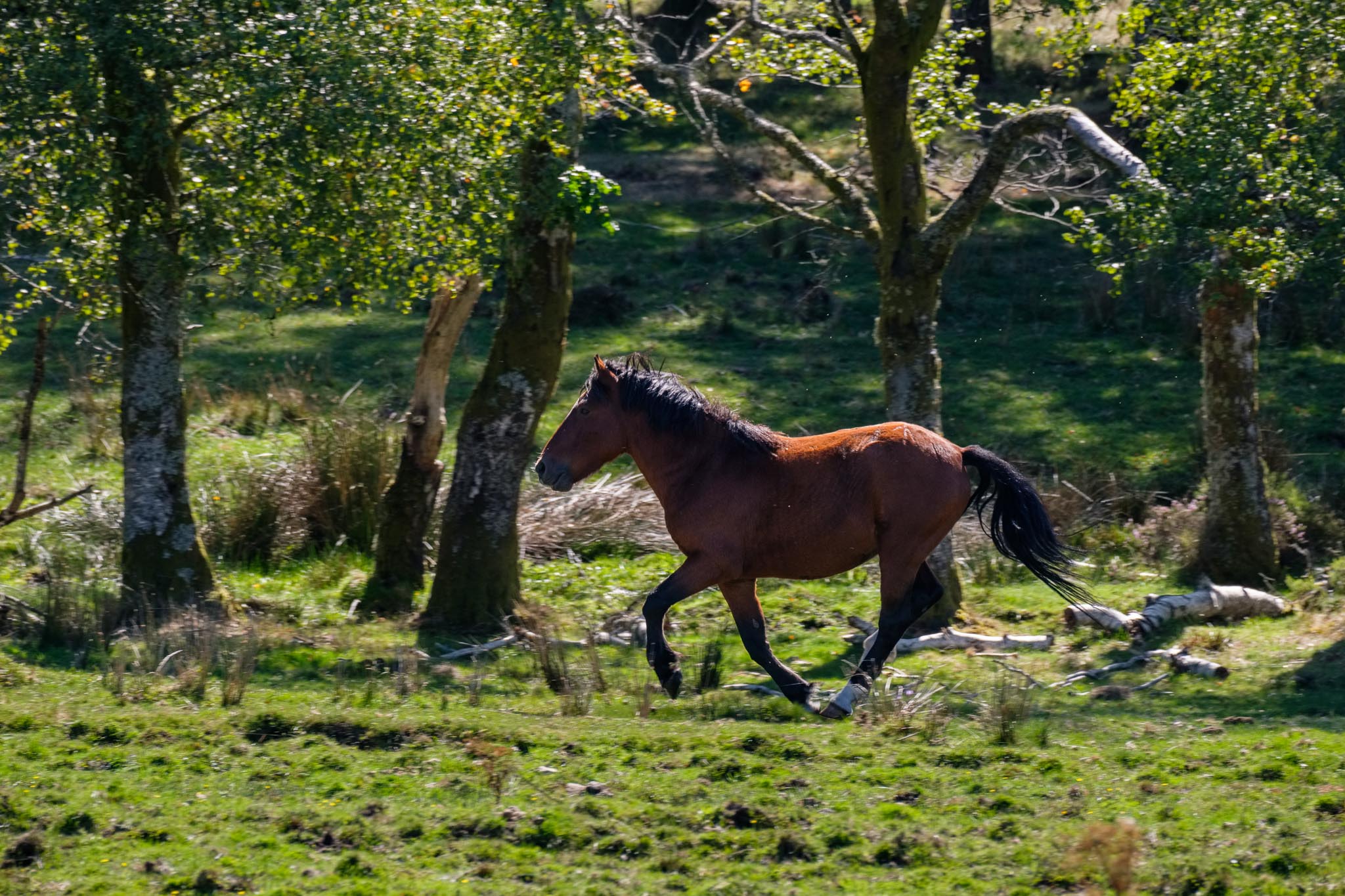
The viewpoint of Tibo is located at the top of the mountain, and affords a panoramic view over the entire serra da Peneda. The Senhora da Peneda sanctuary can be seen in the distance, with the villages of Gavieira, Rouças, and Tibo, a bit closer. The entire landscape is made of impressive granite formations, including the Fraga das Pastorinhas, an impressive granite wall that is also know by rock climbers as the “Portuguese Yosemite”. This is really an incredible view.
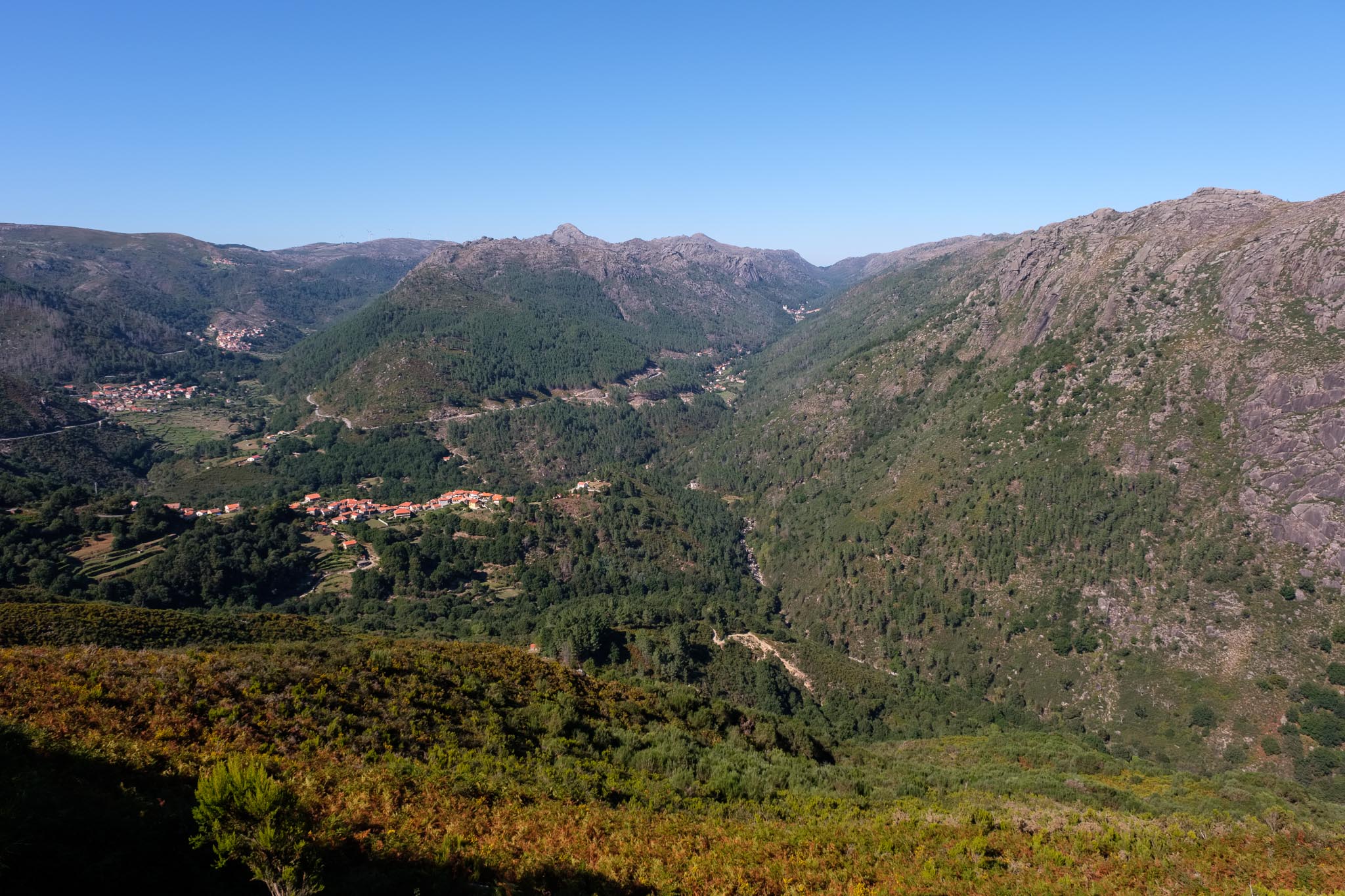
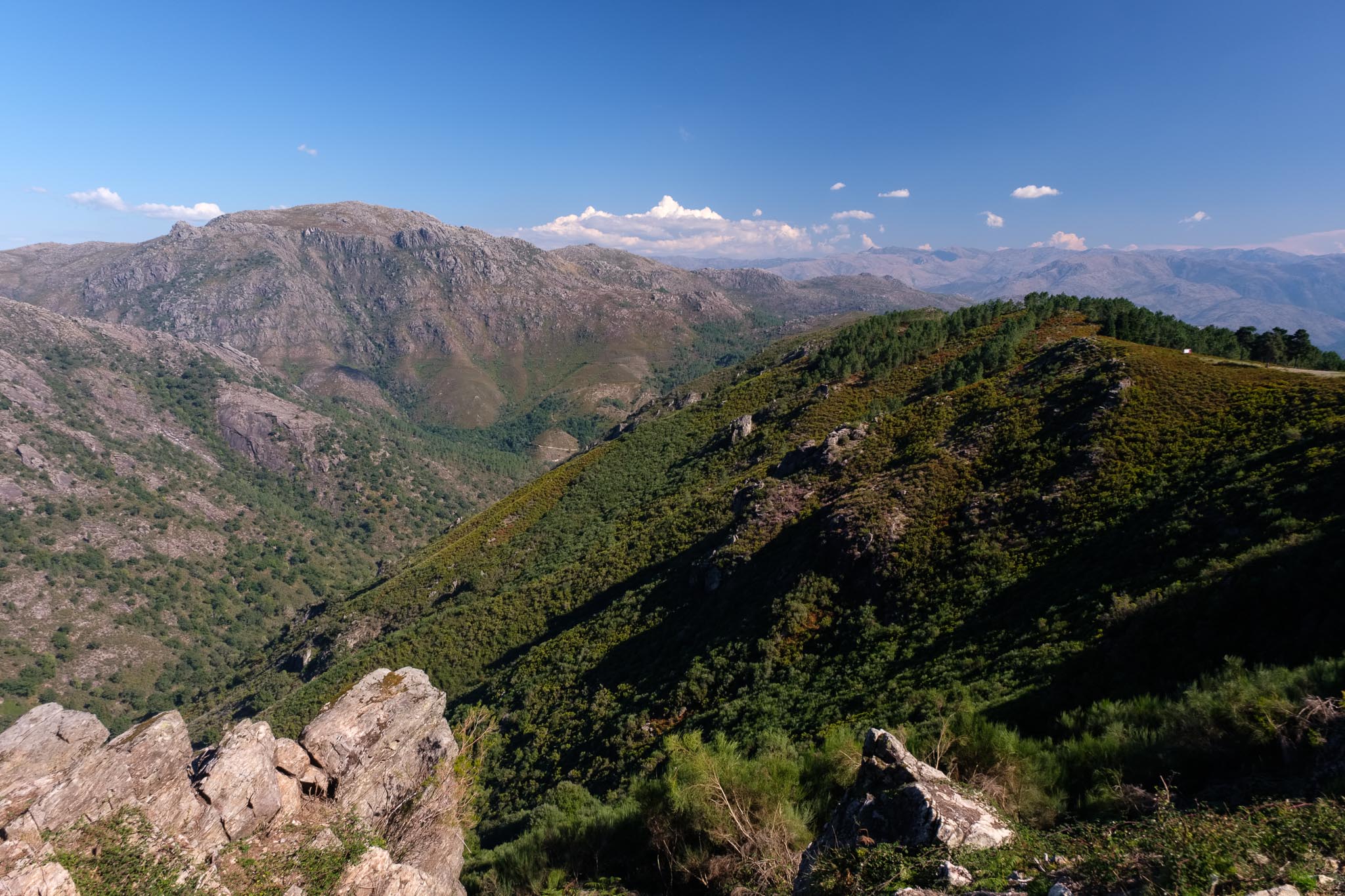
After admiring this view, we drove to Tibo, where we left the car and took the footpath to the valley. We wanted to find one of the (still) hidden lakes of the area, the so-called Druids lake. The trail is not signaled, but follows a few local paths along the woods. The name of the lake is appropriate, as very soon we are crossing some wonderful magical woods, with large chestnut and oak trees. The shaded path is a welcome respite after the days’ heat. Soon we are walking near the Peneda river, that has a few waterfalls here and there. Looking up, we can see the impressive Fraga das Pastorinhas. Even though the valley is already in the shade, and the water is cold, I can not resist to take a swim. What a wonderful place.
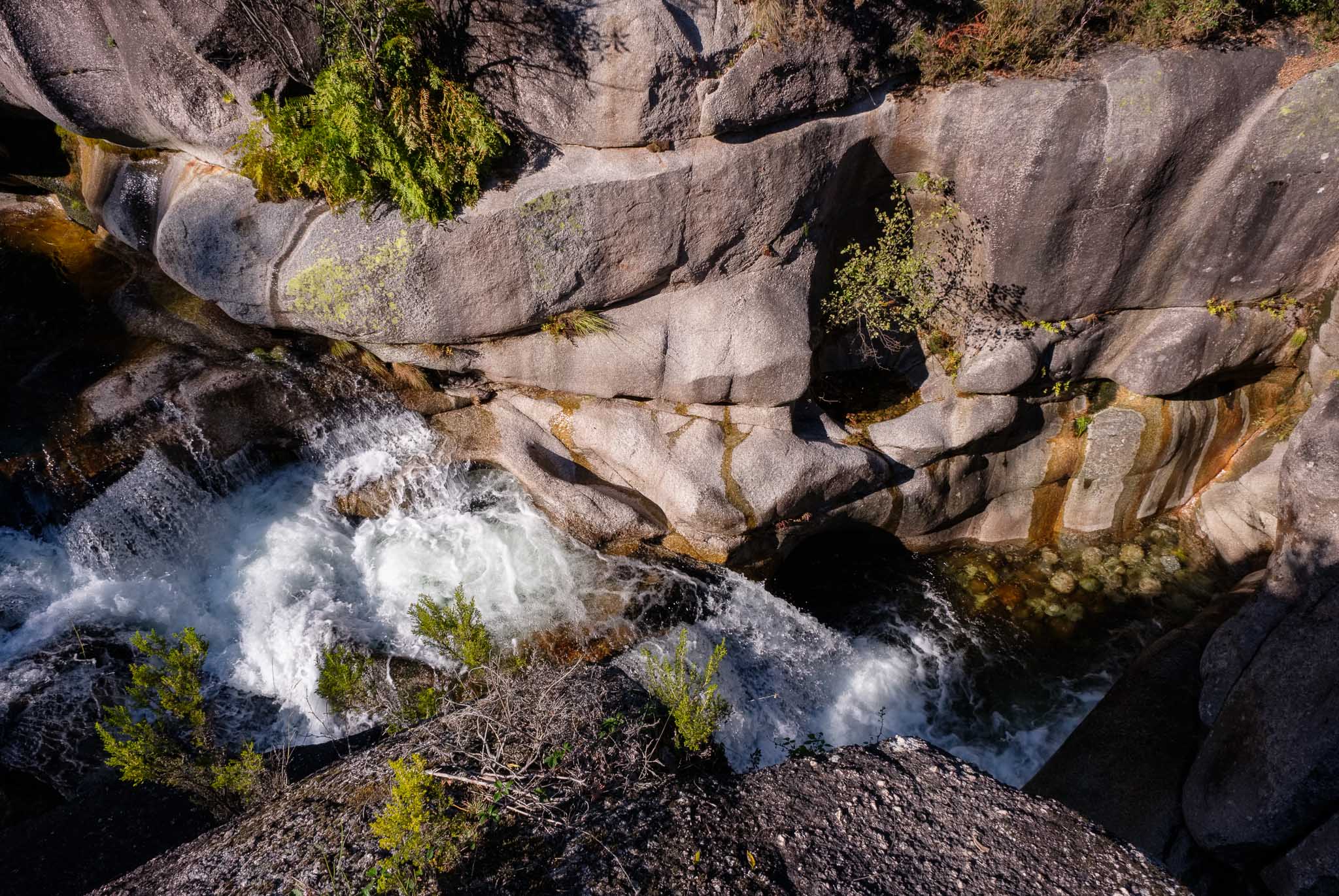
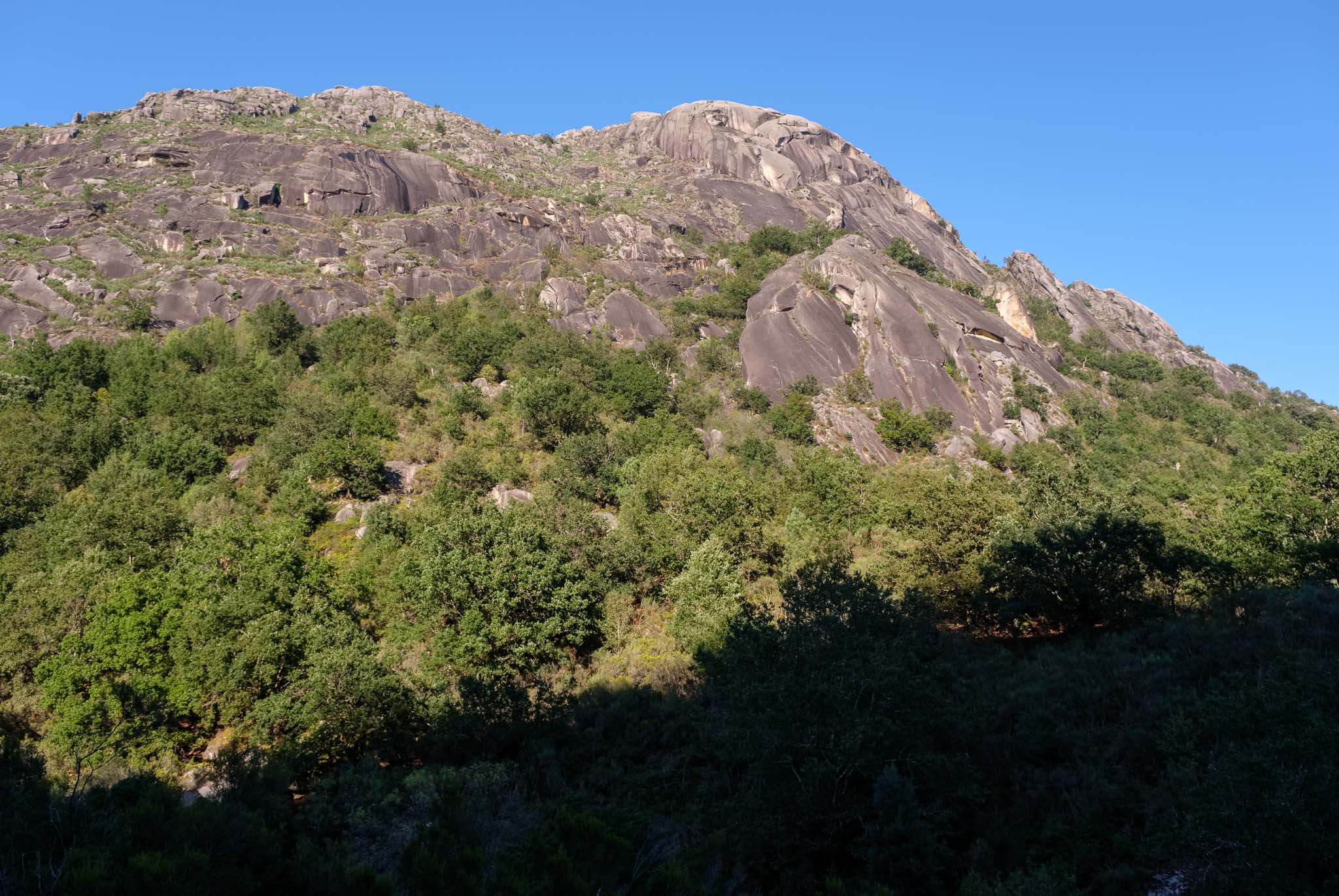
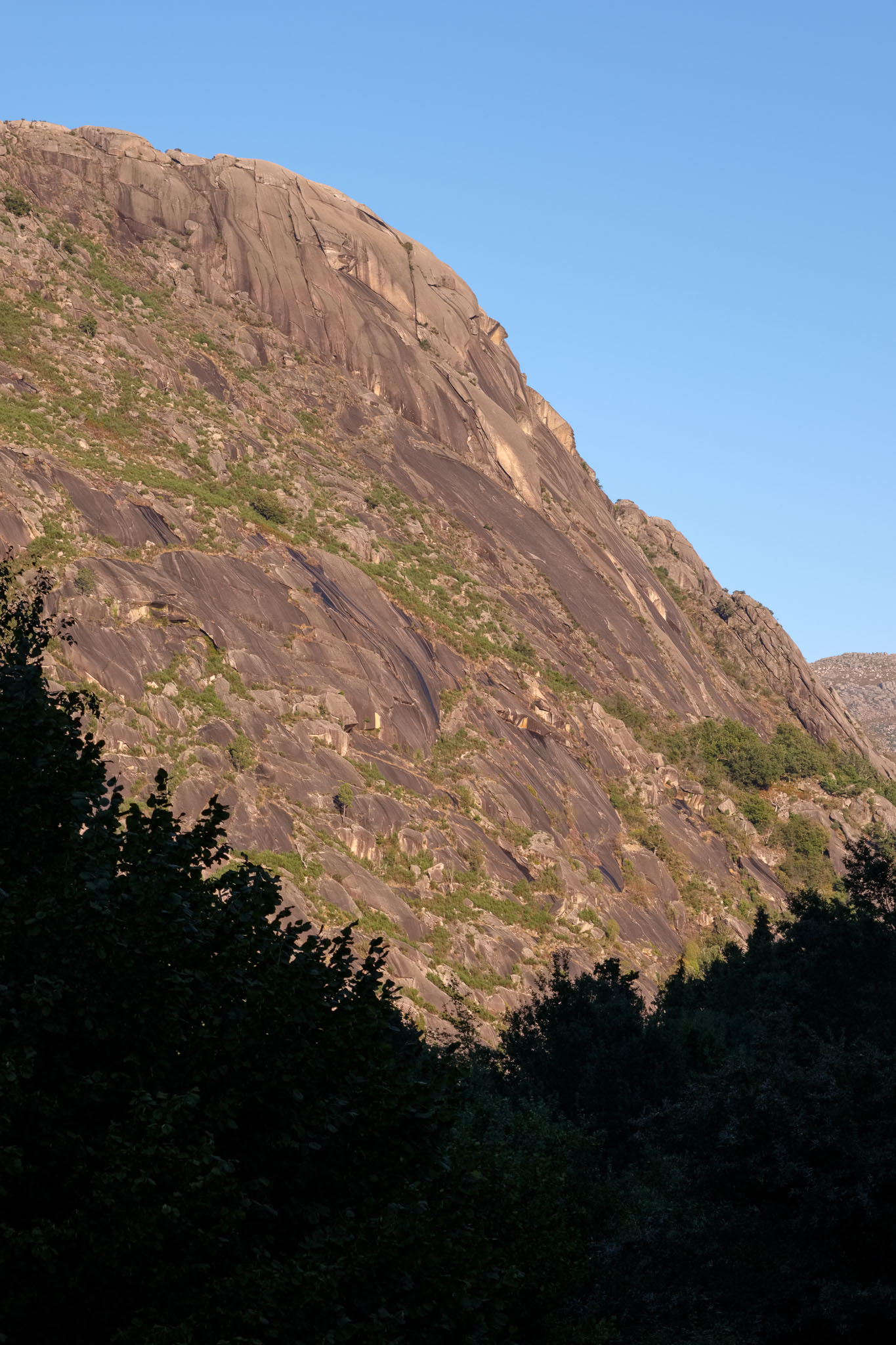
At the end of the day, we are back in Sistelo. Our trip is coming to an end, as the following day we would be driving home. But again, I like to wake up early to check the light, and when I leave the house the next morning, the valley of Sistelo is covered in fog. I grab the camera and make a few photos with this weather. The fog filters the light and enhances the greens of the foliage.
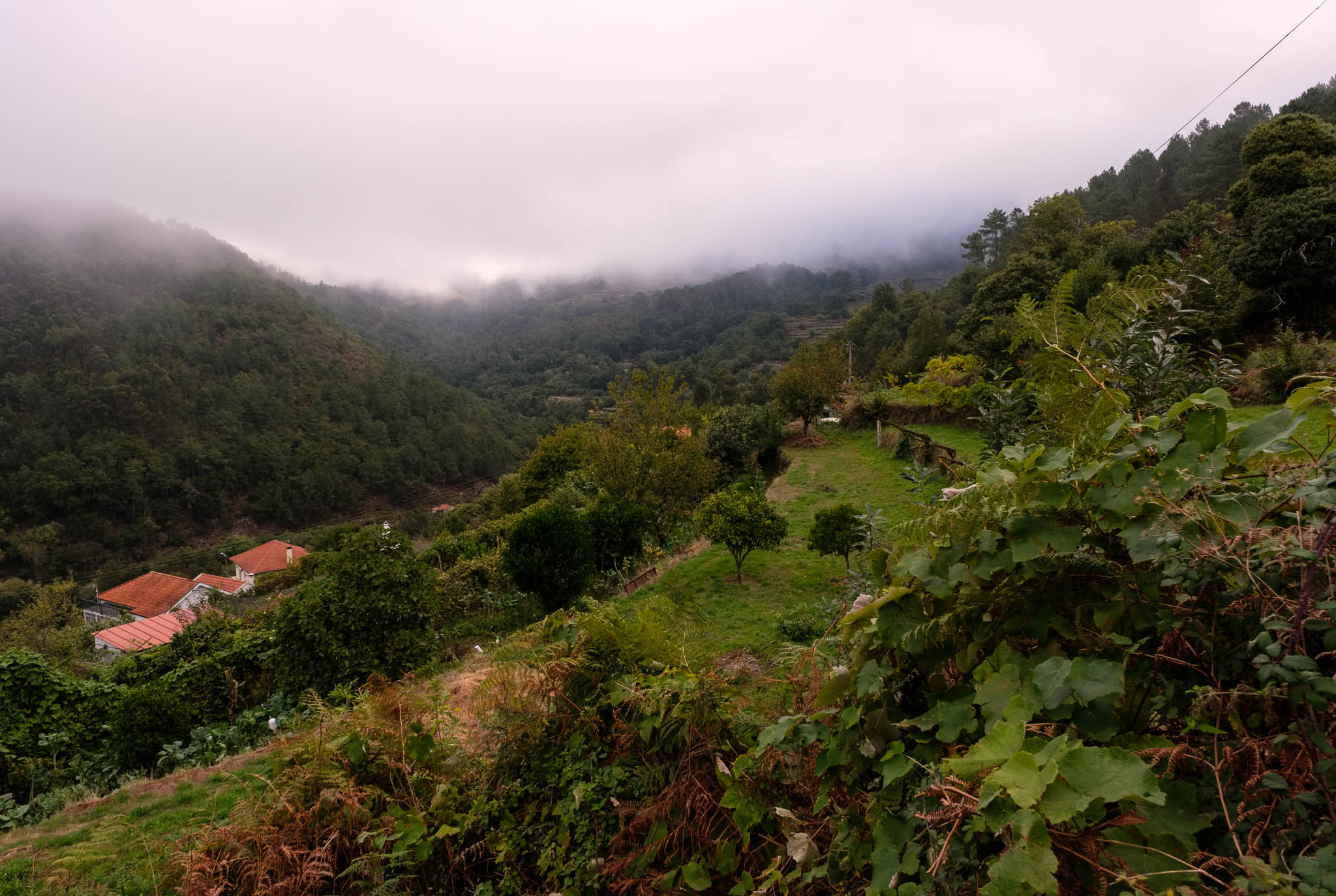

I hope you have enjoyed tis 3-part instalment that describes a one week trip in the PNPG, a truly wonderful region. A final word about the photographic equipment that I have used during this trip. As I knew flexibility would be very important, I chose to carry 2 cameras, each with its own zoom lens. As you know, these days I use Fujifilm, so the list was: Fuji XT3 with 70-300mm f/4.5-f/5.6 lens, and Fuji XT30 with 16-80mm f/4 lens. Both lenses feature image stabilization, which is very helpful to avoid using a tripod in many instances. But of course I also carried a small tripod to use when the light levels were low, or when I wanted to make some long exposures.